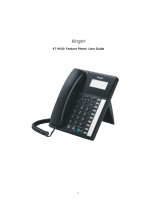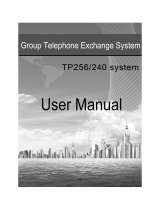
10 Feature Guide
Table of Contents
1 Call Handling Features......................................................................... 15
1.1 Incoming Call Features..................................................................................................16
1.1.1 Incoming Trunk Call Features ..........................................................................................16
1.1.1.1 Incoming Trunk Call Features—SUMMARY .................................................................................................... 16
1.1.1.2 Direct In Line (DIL) .......................................................................................................................................... 19
1.1.1.3 Direct Inward Dialling (DID)/Direct Dialling In (DDI) ........................................................................................ 21
1.1.1.4 Multiple Subscriber Number (MSN) Ringing Service ...................................................................................... 24
1.1.1.5 Calling Line Identification (CLI) Distribution..................................................................................................... 27
1.1.1.6 Intercept Routing ............................................................................................................................................. 29
1.1.1.7 Intercept Routing—No Destination.................................................................................................................. 34
1.1.2 Internal Call Features.......................................................................................................35
1.1.2.1 Internal Call Features—SUMMARY ................................................................................................................ 35
1.1.2.2 Internal Call Block............................................................................................................................................ 37
1.1.3 Incoming Call Indication Features.................................................................................... 39
1.1.3.1 Incoming Call Indication Features—SUMMARY ............................................................................................. 39
1.1.3.2 Ring Tone Pattern Selection ............................................................................................................................ 40
1.1.3.3 Call Waiting ..................................................................................................................................................... 42
1.2 Receiving Group Features ............................................................................................44
1.2.1 Idle Extension Hunting .....................................................................................................44
1.2.2 Incoming Call Distribution Group Features ......................................................................46
1.2.2.1 Incoming Call Distribution Group Features—SUMMARY................................................................................ 46
1.2.2.2 Group Call Distribution .................................................................................................................................... 50
1.2.2.3 Outside Destinations in Incoming Call Distribution Group............................................................................... 54
1.2.2.4 Queuing Feature.............................................................................................................................................. 56
1.2.2.5 VIP Call............................................................................................................................................................ 59
1.2.2.6 Overflow Feature ............................................................................................................................................. 60
1.2.2.7 Log-in/Log-out ................................................................................................................................................. 63
1.2.2.8 Supervisory Feature ........................................................................................................................................ 66
1.3 Call Forwarding (FWD)/Do Not Disturb (DND) Features.............................................68
1.3.1 Call Forwarding (FWD)/Do Not Disturb (DND).................................................................68
1.3.1.1 Call Forwarding (FWD)/Do Not Disturb (DND)—SUMMARY .......................................................................... 68
1.3.1.2 Call Forwarding (FWD).................................................................................................................................... 69
1.3.1.3 Do Not Disturb (DND)...................................................................................................................................... 73
1.3.1.4 FWD/DND Button, Group FWD Button............................................................................................................ 75
1.4 Answering Features.......................................................................................................78
1.4.1 Answering Features .........................................................................................................78
1.4.1.1 Answering Features—SUMMARY................................................................................................................... 78
1.4.1.2 Line Preference—Incoming ............................................................................................................................. 79
1.4.1.3 Call Pickup....................................................................................................................................................... 80
1.4.1.4 Hands-free Answerback .................................................................................................................................. 82
1.5 Making Call Features .....................................................................................................84
1.5.1 Predialling ........................................................................................................................84
1.5.2 Automatic Extension Release ..........................................................................................85
1.5.3 Intercom Call ....................................................................................................................86
1.5.4 Trunk Call Features ..........................................................................................................88
1.5.4.1 Trunk Call Features—SUMMARY.................................................................................................................... 88
1.5.4.2 Emergency Call ............................................................................................................................................... 89
1.5.4.3 Account Code Entry ........................................................................................................................................ 90
1.5.4.4 Dial Type Selection .......................................................................................................................................... 92
1.5.4.5 Reverse Circuit ................................................................................................................................................ 93
1.5.4.6 Pause Insertion................................................................................................................................................ 94
1.5.4.7 Host PBX Access Code (Access Code to the Telephone Company from a Host PBX) .................................. 95
1.5.4.8 Special Carrier Access Code .......................................................................................................................... 97























